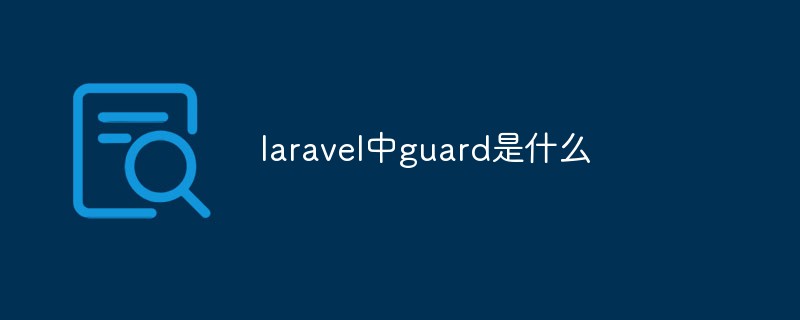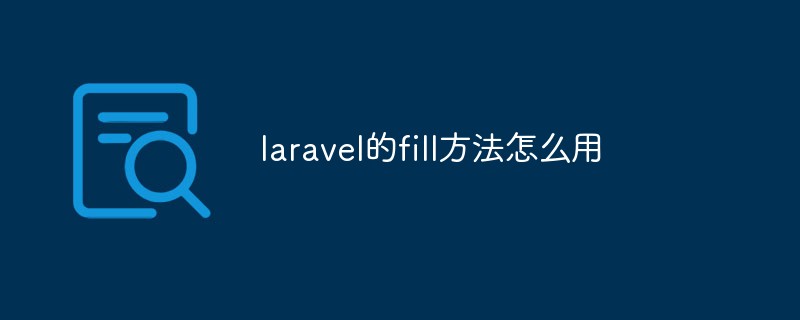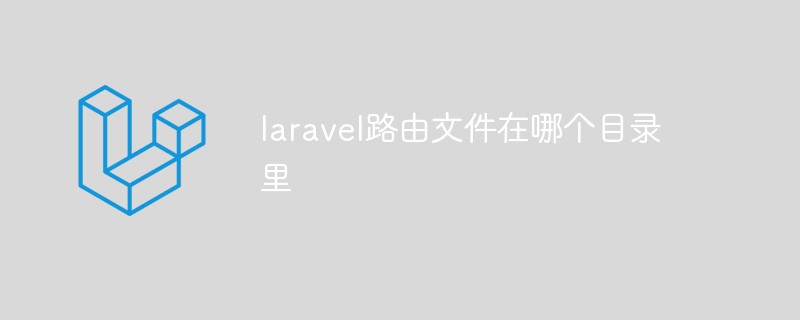The following tutorial column of Laravel Framework will give you a detailed explanation of Laravel-IOC container. I hope it will be helpful to friends in need!

1. Dependency
IOC (inversion of controller) is called inversion of control mode, also known as (dependency injection) dependency injection mode . To understand the concept of dependency injection, we first understand what dependencies
//支付宝支付
class Alipay {
public function __construct(){}
public function pay()
{
echo 'pay bill by alipay';
}
}
//微信支付
class Wechatpay {
public function __construct(){}
public function pay()
{
echo 'pay bill by wechatpay';
}
}
//银联支付
class Unionpay{
public function __construct(){}
public function pay()
{
echo 'pay bill by unionpay';
}
}
//支付账单
class PayBill {
private $payMethod;
public function __construct( )
{
$this->payMethod= new Alipay ();
}
public function payMyBill()
{
$this->payMethod->pay();
}
}
$pb = new PayBill ();
$pb->payMyBill();Through the above code, we know that when we create an instance of class PayBill, the constructor of PayBill contains { $this->payMethod = new Alipay (); }, that is, a class Alipay is instantiated. At this time, dependency is generated. It can be understood that when I want to pay with Alipay, I first need to obtain an instance of Alipay, or understand In order to obtain Alipay functional support. When we finish using the new keyword, the dependency has actually been resolved because we have obtained an instance of Alipay.
In fact, before I knew the concept of ioc, my Most of the code is in this pattern~ _ ~. What is the problem with this? To put it simply, for example, what should I do when I want to use WeChat instead of Alipay? What you can do is to modify the constructor of Payment. The code instantiates a WeChat payment Wechatpay.
If our program is not very big, we may not feel anything, but when your code is very complex and huge, if our needs often change , then modifying the code becomes very troublesome. Therefore, the idea of ioc is not to use new to instantiate and solve dependencies in class Payment, but to turn it into an external responsibility. To put it simply, there is no new step internally, and the payment can be obtained through dependency injection. Example.
2. Dependency injection
We know what dependency means, so what does dependency injection mean? Let’s expand the above code
//支付类接口
interface Pay
{
public function pay();
}
//支付宝支付
class Alipay implements Pay {
public function __construct(){}
public function pay()
{
echo 'pay bill by alipay';
}
}
//微信支付
class Wechatpay implements Pay {
public function __construct(){}
public function pay()
{
echo 'pay bill by wechatpay';
}
}
//银联支付
class Unionpay implements Pay {
public function __construct(){}
public function pay()
{
echo 'pay bill by unionpay';
}
}
//付款
class PayBill {
private $payMethod;
public function __construct( Pay $payMethod)
{
$this->payMethod= $payMethod;
}
public function payMyBill()
{
$this->payMethod->pay();
}
}
//生成依赖
$payMethod = new Alipay();
//注入依赖
$pb = new PayBill( $payMethod );
$pb->payMyBill();above In the code, compared with the previous one, we add a Pay interface, and then all payment methods inherit this interface and implement the pay function. You may ask why an interface is used, which we will talk about later.
When we instantiate PayBill, we first instantiate an Alipay. This step is to generate the dependency. Then we need to inject this dependency into the PayBill instance. Through the code, we You can see { $pb = new PayBill( payMethod ); }, we injected this dependency into PayBill through the constructor. In this way, the PayBill instance $pb has the ability to pay with Alipay.
Inject the instance of class Alipay through the constructor to instantiate a class PayBill. Our injection here is manual injection, not automatic. The Laravel framework implementation is automatic injection.
3. Reflection
Before introducing the IOC container, let us first understand the concept of reflection (reflection), because the IOC container is also implemented through reflection. I copied a paragraph from the Internet to explain what reflection means
"Reflection" refers to extending the analysis of PHP programs in the running state of PHP, exporting or extracting detailed information about classes, methods, properties, parameters, etc., including comments. This dynamically obtained information and dynamically calling methods of objects The function is called reflection API. Reflection is an API for manipulating meta-models in the object-oriented paradigm. It is very powerful and can help us build complex and scalable applications. Its uses are such as: automatically loading plug-ins, automatically generating documents, and even usable To expand the PHP language"
Give a simple example
class B{
}
class A {
public function __construct(B $args)
{
}
public function dosomething()
{
echo 'Hello world';
}
}
//建立class A 的反射
$reflection = new ReflectionClass('A');
$b = new B();
//获取class A 的实例
$instance = $reflection ->newInstanceArgs( [ $b ]);
$instance->dosomething(); //输出 ‘Hellow World’
$constructor = $reflection->getConstructor();//获取class A 的构造函数
$dependencies = $constructor->getParameters();//获取class A 的依赖类
dump($constructor);
dump($dependencies);The $constructor and $dependencies obtained by dumping are as follows
//constructor
ReflectionMethod {#351
+name: "__construct"
+class: "A"
parameters: array:1 []
extra: array:3 []
modifiers: "public"
}
//$dependencies
array:1 [
0 => ReflectionParameter {#352
+name: "args"
position: 0
typeHint: "B"
}
]Through the above code we can Obtain the constructor of class A and the classes that the constructor depends on. Here we rely on a quantity named 'args', and through TypeHint we can know that it is of type Class B; the reflection mechanism allows me to parse a class , you can obtain the attributes, methods, constructors, and parameters required by the constructor in a class. Only with this can we realize Laravel's IOC container.
4.IOC container
Next, we will introduce the concept of Laravel's IOC service container. In the laravel framework, the service container is the entire The core of laravel, it provides the configuration and invocation of the entire system functions and services. A container is literally a thing that holds things, such as a refrigerator. When we need the contents of the refrigerator, we can just take it directly from it. Service container It can also be understood this way. When the program starts running, we put or register (bind) some services we need into the container, and when I need them, just take them out (make). The bind mentioned above and make are the two actions of registration and removal.
5. IOC 容器代码
好了,说了这么多,下面要上一段容器的代码了. 下面这段代码不是laravel 的源码, 而是来自一本书《laravel 框架关键技术解析》. 这段代码很好的还原了laravel 的服务容器的核心思想. 代码有点长, 小伙伴们要耐心看. 当然小伙伴完全可以试着运行一下这段代码,然后调试一下,这样会更有助于理解.
<?php
//容器类装实例或提供实例的回调函数
class Container {
//用于装提供实例的回调函数,真正的容器还会装实例等其他内容
//从而实现单例等高级功能
protected $bindings = [];
//绑定接口和生成相应实例的回调函数
public function bind($abstract, $concrete=null, $shared=false) {
//如果提供的参数不是回调函数,则产生默认的回调函数
if(!$concrete instanceof Closure) {
$concrete = $this->getClosure($abstract, $concrete);
}
$this->bindings[$abstract] = compact('concrete', 'shared');
}
//默认生成实例的回调函数
protected function getClosure($abstract, $concrete) {
return function($c) use ($abstract, $concrete) {
$method = ($abstract == $concrete) ? 'build' : 'make';
return $c->$method($concrete);
};
}
public function make($abstract) {
$concrete = $this->getConcrete($abstract);
if($this->isBuildable($concrete, $abstract)) {
$object = $this->build($concrete);
} else {
$object = $this->make($concrete);
}
return $object;
}
protected function isBuildable($concrete, $abstract) {
return $concrete === $abstract || $concrete instanceof Closure;
}
//获取绑定的回调函数
protected function getConcrete($abstract) {
if(!isset($this->bindings[$abstract])) {
return $abstract;
}
return $this->bindings[$abstract]['concrete'];
}
//实例化对象
public function build($concrete) {
if($concrete instanceof Closure) {
return $concrete($this);
}
$reflector = new ReflectionClass($concrete);
if(!$reflector->isInstantiable()) {
echo $message = "Target [$concrete] is not instantiable";
}
$constructor = $reflector->getConstructor();
if(is_null($constructor)) {
return new $concrete;
}
$dependencies = $constructor->getParameters();
$instances = $this->getDependencies($dependencies);
return $reflector->newInstanceArgs($instances);
}
//解决通过反射机制实例化对象时的依赖
protected function getDependencies($parameters) {
$dependencies = [];
foreach($parameters as $parameter) {
$dependency = $parameter->getClass();
if(is_null($dependency)) {
$dependencies[] = NULL;
} else {
$dependencies[] = $this->resolveClass($parameter);
}
}
return (array)$dependencies;
}
protected function resolveClass(ReflectionParameter $parameter) {
return $this->make($parameter->getClass()->name);
}
}上面的代码就生成了一个容器,下面是如何使用容器
$app = new Container();
$app->bind("Pay", "Alipay");//Pay 为接口, Alipay 是 class Alipay
$app->bind("tryToPayMyBill", "PayBill"); //tryToPayMyBill可以当做是Class PayBill 的服务别名
//通过字符解析,或得到了Class PayBill 的实例
$paybill = $app->make("tryToPayMyBill");
//因为之前已经把Pay 接口绑定为了 Alipay,所以调用pay 方法的话会显示 'pay bill by alipay '
$paybill->payMyBill();当我们实例化一个Container得到 $app 后, 我们就可以向其中填充东西了
$app->bind("Pay", "Alipay");
$app->bind("tryToPayMyBill", "PayBill");当执行完这两行绑定码后, $app 里面的属性 $bindings 就已经有了array 值,是啥样的呢,我们来看下
array:2 [
"App\Http\Controllers\Pay" => array:2 [
"concrete" => Closure {#355
class: "App\Http\Controllers\Container"
this:Container{[#354](http://127.0.0.4/ioc#sf-dump-254248394-ref2354) …}
parameters: array:1 [
"$c" => []
]
use: array:2 [
"$abstract" => "App\Http\Controllers\Pay"
"$concrete" => "App\Http\Controllers\Alipay"
]
file: "C:\project\test\app\Http\Controllers\IOCController.php" line: "119 to 122"
}
"shared" => false
]
"tryToPayMyBill" => array:2 [
"concrete" => Closure {#359
class: "App\Http\Controllers\Container"
this:Container{[#354](http://127.0.0.4/ioc#sf-dump-254248394-ref2354) …}
parameters: array:1 [
"$c" => []
]
use: array:2 [
"$abstract" => "tryToPayMyBill"
"$concrete" => "\App\Http\Controllers\PayBill"
]
file: "C:\project\test\app\Http\Controllers\IOCController.php" line: "119 to 122"
}
"shared" => false
]
]当执行 $paybill = $app->make(“tryToPayMyBill”); 的时候, 程序就会用make方法通过闭包函数的回调开始解析了.
解析’tryToPayBill’ 这个字符串, 程序通过闭包函数 和build方法会得到 ‘PayBill’ 这个字符串,该字符串保存在$concrete 上. 这个是第一步. 然后程序还会以类似于递归方式 将$concrete 传入 build() 方法. 这个时候build里面就获取了$concrete = ‘PayBill’. 这个时候反射就派上了用场, 大家有没有发现,PayBill 不就是 class PayBill 吗? 然后在通过反射的方法ReflectionClass(‘PayBill’) 获取PayBill 的实例. 之后通过getConstructor(),和getParameters() 等方法知道了 Class PayBill 和 接口Pay 存在依赖
//$constructor = $reflector->getConstructor();
ReflectionMethod {#374
+name: "__construct"
+class: "App\Http\Controllers\PayBill"
parameters: array:1 [
"$payMethod" => ReflectionParameter {#371
+name: "payMethod"
position: 0 typeHint: "App\Http\Controllers\Pay"
}
]
extra: array:3 [
"file" => "C:\project\test\app\Http\Controllers\IOCController.php"
"line" => "83 to 86"
"isUserDefined" => true
]
modifiers: "public"
}
//$dependencies = $constructor->getParameters();
array:1 [
0 => ReflectionParameter {#370
+name: "payMethod"
position: 0
typeHint: "App\Http\Controllers\Pay"
}
]接着,我们知道了有’Pay’这个依赖之后呢,我们要做的就是解决这个依赖,通过 getDependencies($parameters), 和 resolveClass(ReflectionParameter $parameter) ,还有之前的绑定$app->bind(“Pay”, “Alipay”); 在build 一次的时候,通过 return new $concrete;到这里我们得到了这个Alipay 的实例
if(is_null($constructor)) {
return new $concrete;
}到这里我们总算结局了这个依赖, 这个依赖的结果就是实例化了一个 Alipay. 到这里还没结束
$instances = $this->getDependencies($dependencies);
上面的$instances 数组只有一个element 那就是 Alipay 实例
array:1 [0 =>Alipay
{#380}
]最终通过 newInstanceArgs() 方法, 我们获取到了 PayBill 的实例。
return $reflector->newInstanceArgs($instances);
到这里整个流程就结束了, 我们通过 bind 方式绑定了一些依赖关系, 然后通过make 方法 获取到到我们想要的实例. 在make中有牵扯到了闭包函数,反射等概念.
好了,当我们把容器的概念理解了之后,我们就可以理解下为什么要用接口这个问题了. 如果说我不想用支付宝支付,我要用微信支付怎么办,too easy.
$app->bind("Pay", "Wechatpay");
$app->bind("tryToPayMyBill", "PayBill");
$paybill = $app->make("tryToPayMyBill");
$paybill->payMyBill();是不是很简单呢, 只要把绑定从’Alipay’ 改成 ‘Wechatpay’ 就行了,其他的都不用改. 这就是为什么我们要用接口. 只要你的支付方式继承了pay 这个接口,并且实现pay 这个方法,我们就能够通过绑定正常的使用. 这样我们的程序就非常容易被拓展,因为以后可能会出现成百上千种的支付方式.
好了,到这里不知道小伙伴有没有理解呢,我建议大家可以试着运行下这些代码, 这样理解起来会更快.同时推荐大家去看看 《laravel 框架关键技术解析》这本书,写的还是不错的.
The above is the detailed content of Detailed explanation of Laravel—IOC container. For more information, please follow other related articles on the PHP Chinese website!
 laravel单点登录方法详解Jun 15, 2022 am 11:45 AM
laravel单点登录方法详解Jun 15, 2022 am 11:45 AM本篇文章给大家带来了关于laravel的相关知识,其中主要介绍了关于单点登录的相关问题,单点登录是指在多个应用系统中,用户只需要登录一次就可以访问所有相互信任的应用系统,下面一起来看一下,希望对大家有帮助。
 一起来聊聊Laravel的生命周期Apr 25, 2022 pm 12:04 PM
一起来聊聊Laravel的生命周期Apr 25, 2022 pm 12:04 PM本篇文章给大家带来了关于laravel的相关知识,其中主要介绍了关于Laravel的生命周期相关问题,Laravel 的生命周期从public\index.php开始,从public\index.php结束,希望对大家有帮助。
 laravel中guard是什么Jun 02, 2022 pm 05:54 PM
laravel中guard是什么Jun 02, 2022 pm 05:54 PM在laravel中,guard是一个用于用户认证的插件;guard的作用就是处理认证判断每一个请求,从数据库中读取数据和用户输入的对比,调用是否登录过或者允许通过的,并且Guard能非常灵活的构建一套自己的认证体系。
 laravel中asset()方法怎么用Jun 02, 2022 pm 04:55 PM
laravel中asset()方法怎么用Jun 02, 2022 pm 04:55 PMlaravel中asset()方法的用法:1、用于引入静态文件,语法为“src="{{asset(‘需要引入的文件路径’)}}"”;2、用于给当前请求的scheme前端资源生成一个url,语法为“$url = asset('前端资源')”。
 实例详解laravel使用中间件记录用户请求日志Apr 26, 2022 am 11:53 AM
实例详解laravel使用中间件记录用户请求日志Apr 26, 2022 am 11:53 AM本篇文章给大家带来了关于laravel的相关知识,其中主要介绍了关于使用中间件记录用户请求日志的相关问题,包括了创建中间件、注册中间件、记录用户访问等等内容,下面一起来看一下,希望对大家有帮助。
 laravel中间件基础详解May 18, 2022 am 11:46 AM
laravel中间件基础详解May 18, 2022 am 11:46 AM本篇文章给大家带来了关于laravel的相关知识,其中主要介绍了关于中间件的相关问题,包括了什么是中间件、自定义中间件等等,中间件为过滤进入应用的 HTTP 请求提供了一套便利的机制,下面一起来看一下,希望对大家有帮助。
 laravel的fill方法怎么用Jun 06, 2022 pm 03:33 PM
laravel的fill方法怎么用Jun 06, 2022 pm 03:33 PM在laravel中,fill方法是一个给Eloquent实例赋值属性的方法,该方法可以理解为用于过滤前端传输过来的与模型中对应的多余字段;当调用该方法时,会先去检测当前Model的状态,根据fillable数组的设置,Model会处于不同的状态。
 laravel路由文件在哪个目录里Apr 28, 2022 pm 01:07 PM
laravel路由文件在哪个目录里Apr 28, 2022 pm 01:07 PMlaravel路由文件在“routes”目录里。Laravel中所有的路由文件定义在routes目录下,它里面的内容会自动被框架加载;该目录下默认有四个路由文件用于给不同的入口使用:web.php、api.php、console.php等。


Hot AI Tools

Undresser.AI Undress
AI-powered app for creating realistic nude photos

AI Clothes Remover
Online AI tool for removing clothes from photos.

Undress AI Tool
Undress images for free

Clothoff.io
AI clothes remover

AI Hentai Generator
Generate AI Hentai for free.

Hot Article

Hot Tools

SublimeText3 Mac version
God-level code editing software (SublimeText3)

SublimeText3 Linux new version
SublimeText3 Linux latest version

SecLists
SecLists is the ultimate security tester's companion. It is a collection of various types of lists that are frequently used during security assessments, all in one place. SecLists helps make security testing more efficient and productive by conveniently providing all the lists a security tester might need. List types include usernames, passwords, URLs, fuzzing payloads, sensitive data patterns, web shells, and more. The tester can simply pull this repository onto a new test machine and he will have access to every type of list he needs.

WebStorm Mac version
Useful JavaScript development tools

SublimeText3 English version
Recommended: Win version, supports code prompts!







